Repair Rust On Body Panels
Article by Mark Trotta
After a patch panel is welded in and the welds grinded down, it's time for the final finishing work. This includes applying body filler, sanding, priming and more sanding, glazing putty, and more priming and sanding.
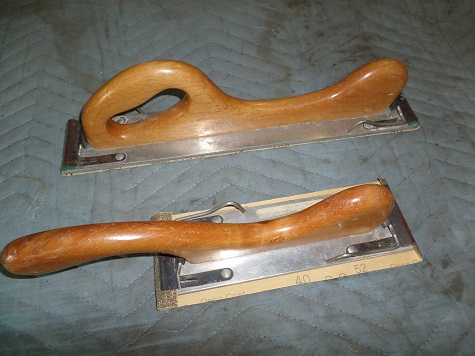
Tools required for sheet metal refinishing include body files, sanding blocks, and an assortment of sandpaper.
Body Fillers
Body fillers are a two-part putty. Once hard, filler can be molded into the desired shape with 100 grit sandpaper, and then smoothed out with 400 grit sandpaper.
Body Filler vs Lead
During the sixties, body filler started replacing lead because it cured quickly, dried hard, and was easily sanded. Trouble was, because of it was easy to use, it was grossly mis-used. While recommended maximum thickness is 1/4", unscrupulous bodymen were substituting body filler for metal work.
Lead is more durable, but requires more skill to apply, and is hazardous to your health if over-heated. Either filler you choose to use, gloves, mask, and proper ventilation are recommended when sanding.
Body Filler
Bondo is what many people call body filler, but it is actually a brand name. It's a quality brand that I've been using for 30+ years, and it still works and smells the same.
If you haven't used body filler before, spend a few minutes watching a few tutorials beforehand. Any of the major brands (properly applied) will have excellent adhesion and strength.
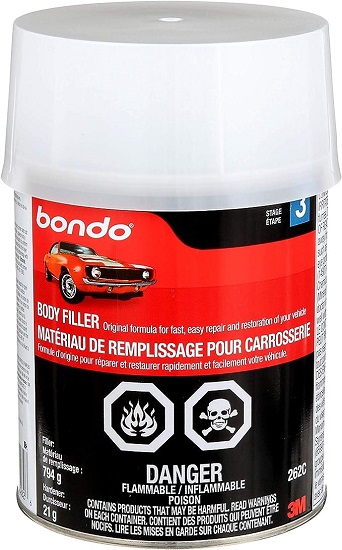
Shop: Bondo Body Filler
Before applying body filler, remove all paint, dust, and grease from the repair area. Roughing up the metal surface with 100-150 grit sandpaper will help the filler adhere.
Mixing Body Filler and Hardener
Each brand of putty has a certain mixing ratio, so read the label for instructions. Before long you will get used to the mixing ration and will be able to mix by eye.
I prefer flexible plastic paddles for mixing and applying body filler. The plastic material is bendable and can be cut down or trimmed with scissors.
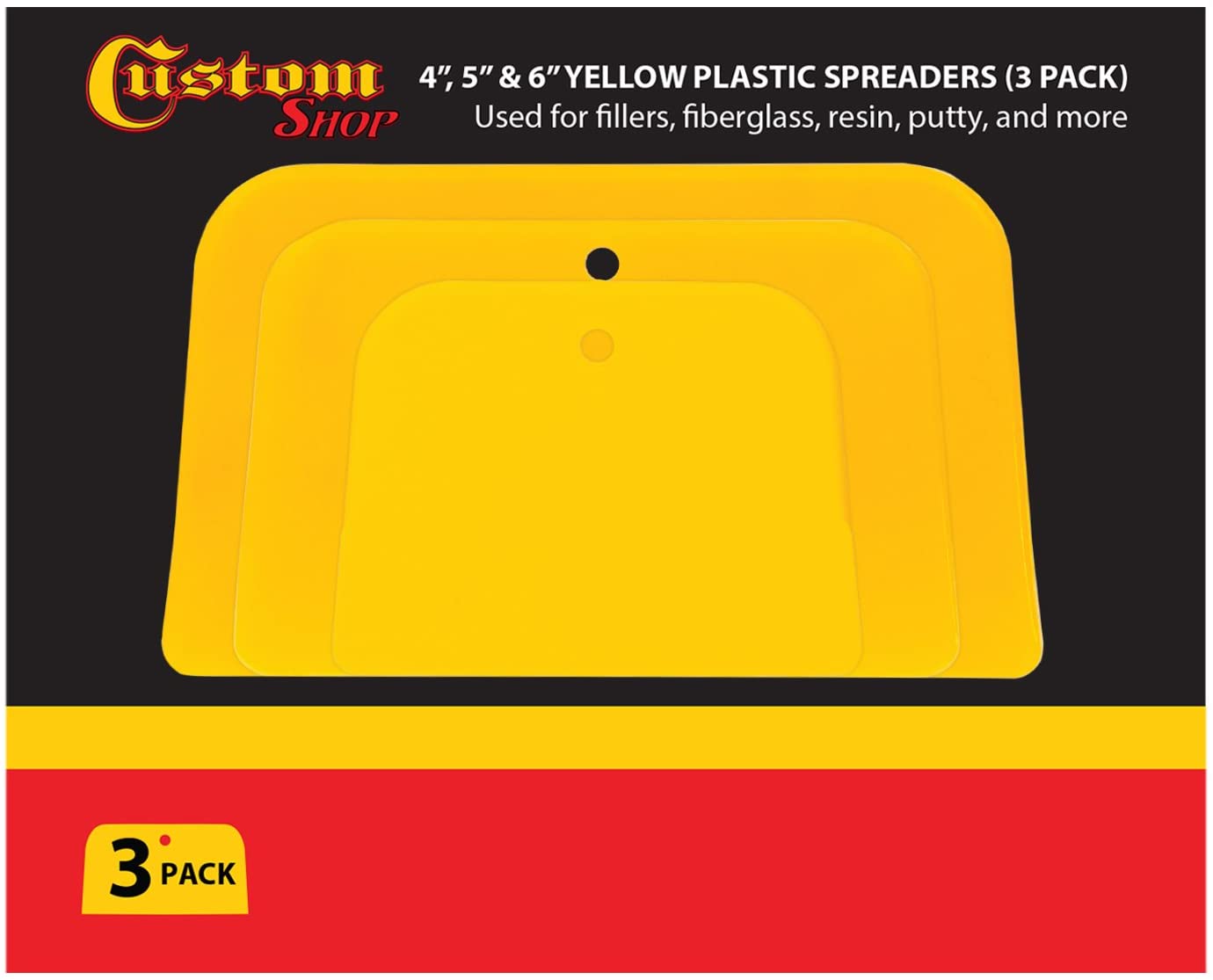
Shop: Plastic Body Filler Spreaders
It's a good idea to wear latex gloves while mixing and applying.
Applying Body Filler
A plastic spreader and a piece of cardboard will work, but a plastic mixing board or a scrap of plexiglass is better because it won't absorb some of the polyester resin from the filler. I have a piece of square sheet metal that I use over and over again.
Apply filler in thin layers, allow to harden, and sand material between layers.
Shaping/Sanding
Automotive sandpapers are the most accurate grade of sandpaper. They can be purchased at most home improvement and auto parts stores. Sandpaper starts at 40 grit (coarse) all the way up to 2000 grit (very fine). There are many ways to shape putty. Plastic body files are the most common.
Best Sanding Blocks For Automotive
You need an assortment of sizes to properly sand different types and parts of body panels. When I started doing body work years ago, we scrounged around for blocks of wood and pieces of hard foam to wrap pieces of sandpaper around. Today, it's a lot easier to get good sanding blocks.
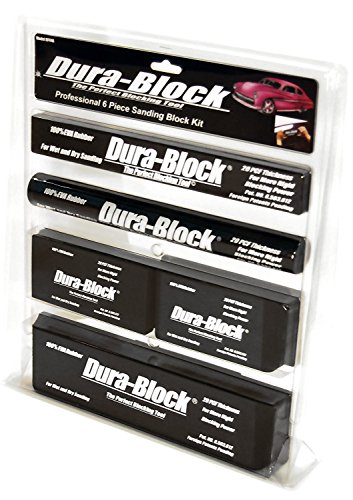
Shop: Dura-Block Sanding Block Set
The Dura-Block sanding block kit includes several sizes and shapes for various sanding jobs. There is flex in the longer blocks to allow working with different contours of the body you are sanding. These sanding blocks work best with 3M "Stikit" rolls, 2-3/4" wide.
Dual-Action Palm Sander
The D/A, or dual-action sander, is small and light and works at low RPMs. They have a dual orbital motion that helps prevent scratching. Its primary use is to "feather", or fan out, the area around a body filler. 150 or 220-grit sandpaper is commonly used.
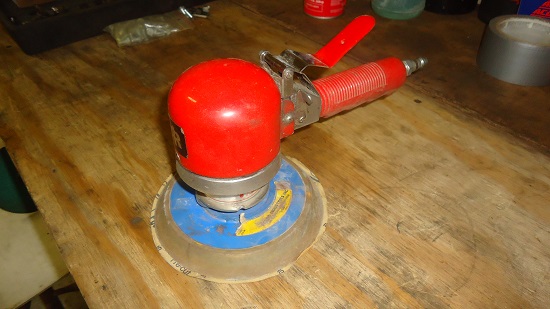
Shop: Dual-Action Sander
When using a D/A sander, keep it flat to the surface and don't press down too hard. Let the sander do the work. Don't forget to wear a respirator.
Glazing Putties
Despite their easy use, glazing putties can come back to haunt you. Glazing putties are for glazing ONLY. Don't try to use them to fill in imperfections - they are for smoothing plastic joints or molding lines.
One-Part Putties
Avoid using one-part glazing putties because they shrink; the more you use, the more it shrinks. A good quality sealer should be used over one-part putties, as they absorb the moisture and reducers out of paints. If not, the results can be disastrous after painting. Be safe and avoid one-part putties.
Polyester Putties
Polyester putties are two-part putties. They can be sanded smooth and are good for filling and shaping. Just like body fillers, they can withstand many varieties of paints, but not solvents. If you need to fill sand-scratches or tiny pin-holes, polyester putty is recommended, as it will not shrink like a one-part glazing putty.
Primers are not sealers (putties can eat through primers too), be sure to use a good sealer or epoxy sealer/primer.
*************************
Related Articles: